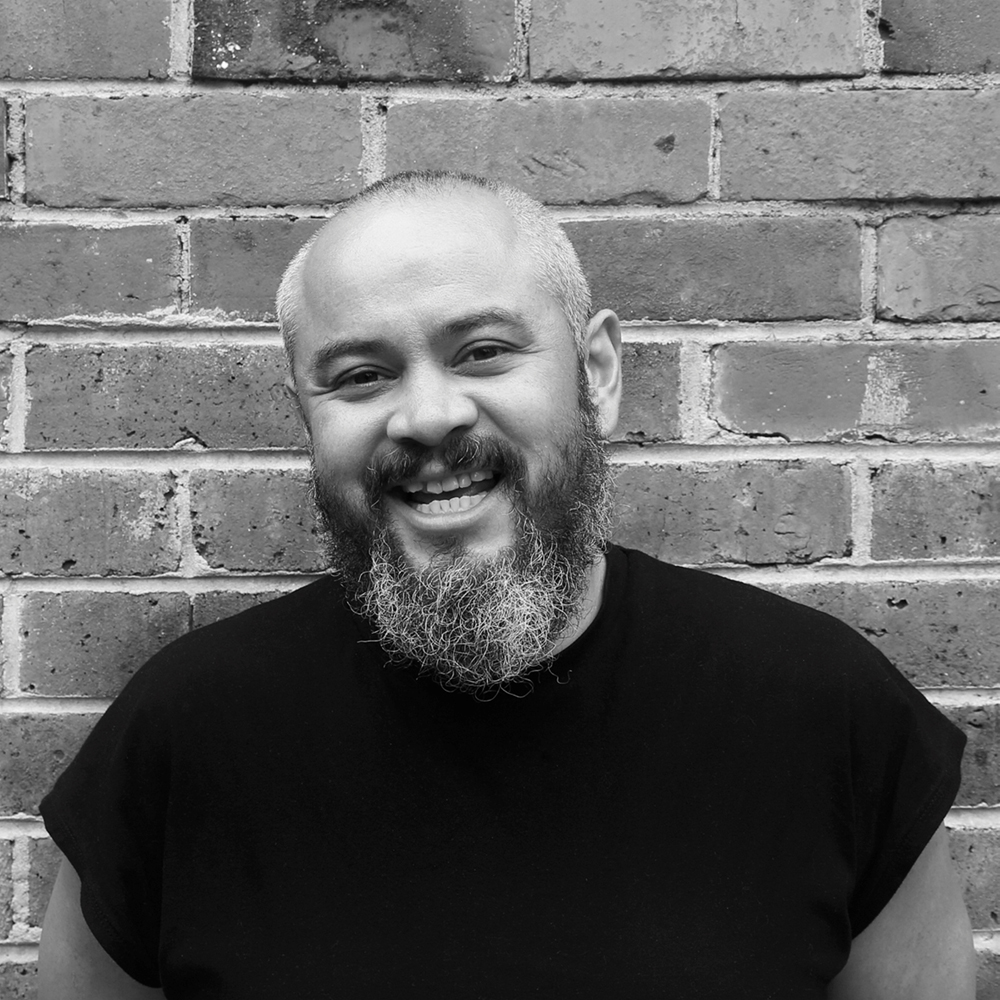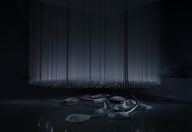Abdul-Rahman Abdullah
Mundijong, Western Australia
2019
Displayed 2019 at Museum of Contemporary Art Australia

Abdul-Rahman Abdullah
Born 1977, Port Kembla, New South Wales. Lives and works Mundijong, Western Australia
Abdul-Rahman Abdullah is an Australian artist whose practice explores the different ways that memory can inhabit and emerge from familial spaces. Drawing on the narrative capacity of animal archetypes, crafted objects and the human presence, Abdullah aims to articulate physical dialogues between the natural world, spirituality and the agency of culture. While his own experiences as a Muslim Australian of mixed ethnicity provide the catalyst, his practice negotiates shared understandings of individual identity and new mythologies in a multicultural context. Living and working in rural Western Australia, Abdullah provides a unique perspective across intersecting and disparate communities.
Artist text
by Eugenia Flynn
We end up talking about stingray curry. I bring up the subject, hoping that food from our shared Malaysian heritage will help us move through the heavier conversation we just had. Death, grief, loss.
But not loss, really. In my mind’s eye I am standing beside my parents’ graves, looking down at the green grass carpet that covers their final resting place. The lightly humid air and the calm silence are softly punctuated by the distant call of tropical birds. If I am outside my body, watching myself standing there, looking down, then in the blink of an eye I can transform and transport to Abdul-Rahman. Away from the tropics, in the southern cold climate, he is seven or eight years old, standing alone on a jetty, looking down also. Abdul-Rahman watches as the sleek wings of a fever of stingrays slowly undulate beneath the glassy top of the cool, calm water.
A flick of the tail and a turn of the body and the stingrays are fleeting in the downpour. One minute they are there, the next they are gone. But never really gone, just disappeared in the falling rain, spirited away, out of sight of the human eye.
I imagine that in this moment Abdul-Rahman’s breath quickens as his eyes search the blue-green water where the fever used to be.
/
We end up talking about the artwork itself. I ask questions about its form, try to wrangle the conversation away from all the things that make me uncomfortable. Intimacy, emotion, the ethereal.
But the ethereal never leaves me, just like my old people used to tell me. In the present of this world, I try to ground myself in the details of Abdul-Rahman’s retelling. The closeness of the water, so still beneath the firm length of the jetty. The familiarity of childhood and the memories that come back every time the rain is heard falling on the sea. If I close my eyes and listen for that rainfall, the droning rhythm of it all, I find myself caught on the cycles of the wind, the gentle gusts that drive patterns of rain onto the water’s top. The rhythm of it all transports me back to the jetty. Alone now, I stand there, thinking of my ancestors and their closeness on the other side, only a thin veil between us.
A little push away from the side, a small slip into the water, and I climb down and in. Now in this other world, beneath the glassy top, a fever of stingrays glides past me with their slowly heaving wings.
I swim as close to them as possible, feel the love in their caress as their wings brush against me.
/
We hang up the phone and I close my eyes to think. When I open them again I find that I have been transported one more time. Now I am standing on the jetty beside Abdul-Rahman. We look down into the water and see the shadowy outline of a lone stingray gliding gently in front of us. I look over at the young Abdul-Rahman and see he is smiling softly into the water.
Abdul-Rahman Abdullah
5min
Abdul-Rahman Abdullah discusses his process and the deep memory and family connections in his work.
